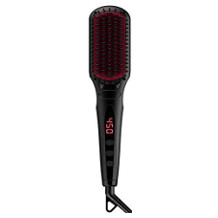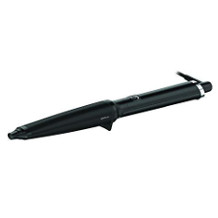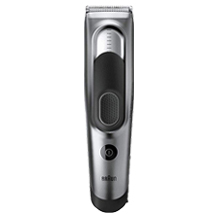Hair dryer purchasing advice: how to choose the right product
- What You Need to Know
- From the storm hairstyle to the blow-dry wave: hairdryers are no longer only suitable for drying hair, but also for styling various hairstyles with the help of attachments and nozzles.
- In addition to the classic, pistol-shaped hand-held hairdryers, there are also compact travel hairdryers, flexible battery-powered hairdryers and special shapes such as drying bonnets or wall-mounted hairdryers.
- The latest technologies with ionic function or infrared radiation ensure that blow-drying is particularly gentle on the hair.
- With individually adjustable temperature and blower settings, hair dryers are suitable for every type of hair, from fine, shorter to thicker, longer hair.
Hair dryer – More than just hot air
For most people, washing their hair is part of their morning routine. However, drying your hair in the air is not an option, especially when you need to do it quickly. Hair dryers, also known as hairdryers or hair dryers, provide a remedy: within a few minutes they ensure completely dry hair. That is why hair dryers are now part of the basic equipment in every bathroom. But the practical beauty product is not only used in private homes. It has also become standard equipment in many hotel rooms, hospitals and swimming pools.
The biggest advantage of hair dryers is that the hair dries much faster than in the air. Long or particularly thick hair in particular takes a lot of time to dry compared to short hairstyles when air-dried. Modern hairdryers can do more than just produce hot air. Thanks to numerous functions and different attachments, they not only dry the hair, but also serve to straighten, tame curls or create volume. Therefore, they are (almost) as useful for our styling as straighteners, brushes or hair gel. Thanks to their modern mode of operation, which is based on ionic technology, for example, as well as safety regulations, there is no heat damage. Although letting the hair air-dry is still the gentlest way to dry it, even this method is not entirely harmless. Especially in winter, air-drying can quickly damage the hair structure due to the cold temperatures.
Manufacturers and prices: From cheap products to professional appliances
In addition to Remington, AEG, Grundig, Rowenta and Valera, the best-known manufacturers of hair dryers include the following brand giants:
- Babyliss: Babyliss is one of the largest companies in the beauty sector and primarily manufactures products for professional use; in the meantime, however, the range is also aimed at private customers.
- Braun: The Braun brand is also known in the personal care sector for its high-quality and particularly durable products.
- Dyson: The powerful but high-priced Dyson hair dryers are mainly found in hairdressing salons.
- Philips: Philips is a manufacturer that regularly develops new technologies such as the ThermoProtect or the Ion function.
In terms of price ranges, there are strong differences depending on the manufacturer and model. Besides the performance, the prices mainly depend on the range of functions. Although an ordinary hairdryer with the most basic features and a short lifespan is available for as little as 15 euros, consumers pay at least 25 euros for a somewhat more durable hairdryer. In this mid-range price range, most models already have conditioning features. However, investing in a professional hairdryer starting at 50 euros is well worth it, as these are not only durable but also dry particularly gently. Moreover, high-priced hair dryers come with numerous accessories such as diffuser or styling brushes.
From the classic hand dryer to the hair dryer bonnet – the variants
Hair dryers are devices that dry hair with the help of warm or cold air. Since warm air can absorb more moisture than cold air, the hair dries faster with the help of hot air. Inside the hairdryer is a blower that consists of a motor and a fan. At the back, the device draws in air, directs it over heating wires and blows it through the ventilation grille to the front onto the hair. If the cold setting is activated, the air is not heated via the heating rods. Although the market today offers numerous different models for a wide range of requirements, the mode of operation is basically the same.
Depending on what users value, a different type of hairdryer is suitable – be it the classic pistol hairdryer, battery hairdryer, travel hairdryer, drying bonnet or wall hairdryer.
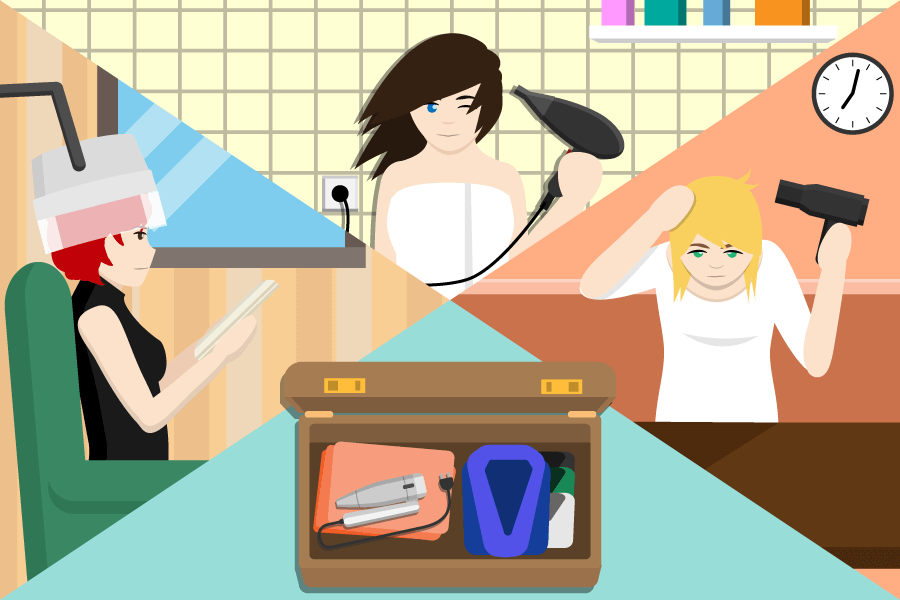
Hand-held hairdryers: The classics
Hand-held hairdryers, also known as pistol hairdryers because of their shape, can be found in almost every household and are intended for daily use. To ensure that they are comfortable to use even after prolonged use, the weight should not be too high. An ergonomically shaped handle also provides more comfort. Depending on the price range, classic hairdryers differ not only in terms of their colours and designs, but also in terms of their temperature and blower level. As a rule, however, there are at least two temperature settings, namely a hot and a cold setting. Higher-priced hair dryers also often have caring features such as a ceramic coating that ensures a constant as well as even distribution of heat and prevents the hair from drying out. By enhancing the ionic effect, it neutralises the static charge of the hair. In addition, the ions transform the water droplets on the hair into micro-molecules that are absorbed by the hair, making it look more vital.
Cordless hairdryers: the flexible ones
Since battery hairdryers do not depend on a cable, they are characterised by their flexibility of use. Depending on the size and model, the runtimes vary, but in contrast to the classic hairdryer, the duration of use is always limited. To charge the battery, users simply plug the power supply into a socket. Although battery hairdryers do not have a high output, they are very practical and ideal for travelling as they do not require an adapter.
Travel hairdryers: The compact ones
The particularly small, handy hairdryers are perfect for travelling as they take up little space in your luggage and fit into almost any bag. They usually have a foldable handle and are lightweight. Their blow-drying power is rather low, so drying hair with them takes longer than with a classic hairdryer. Their performance is therefore too low for regular use. Travel hairdryers, also called mini hairdryers, are not only characterised by their compactness; many of them also adjust automatically to the voltages of different countries. However, they do not have additional functions such as a cold setting.
Hairdryers and wall-mounted hairdryers: special forms
Hair dryers are not only available in the classic, handy design, but also as wall and bonnet models. Wall-mounted hairdryers are mainly used in swimming pools or hotels. They are attached to the walls by means of a bracket. This means that hairdryers are always within reach, especially for frequent hairdryers. Drying bonnets, on the other hand, can be found in most hair salons. They are suitable for styling defined curls and score points for gentle, even heat distribution, but take longer to dry than ordinary hairdryers. In the meantime, they are also being used more and more at home, as they promise uncomplicated hair drying that leaves both hands free, for example, to apply make-up at the same time.
Hairdryer with hairdresser feeling – The most important buying criteria
Which functions, drying features and accessories (such as attachments) are best depends on your own needs. Is it important that the hairdryer has the latest ionic function? Should the hairdryer definitely have a universal voltage so that it can always be used abroad?
Technology makes the difference
A key point of difference between hair dryers is their technology. The most common are ionic or ceramic technology and infrared technology, both of which aim to protect the hair as effectively as possible.
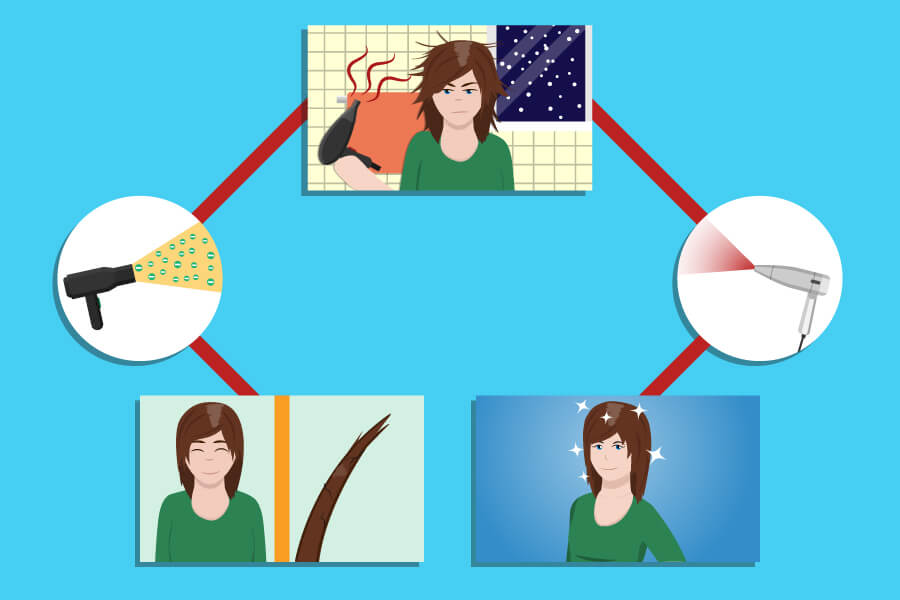
The ionic technology
When hair stands on end again: Especially during the cold season, many people suffer from the anti-static effect, as the heating air draws moisture from the hair, causing it to dry out. The blow-drying and combing process also increases the positive charge of the hair. Hair dryers with an ionic current prevent static charge in particular, but also rapid drying. Hair dryers with an ionic function enrich the air with up to 1.5 million negatively charged ions per cubic centimetre, which neutralise the positively charged particles responsible for the electrostatic charge. So in addition to the heated air, ions also flow out of the hairdryer.
A positive side effect: the negatively charged blow-dry air splits the water droplets in the hair into smaller molecules, which makes it dry faster. By shortening the blow-drying time, consumers not only save on electricity costs, but also expose their hair to heat for only a short period of time, thus protecting it. By smoothing the outer cuticle of the hair, the ions create more shine and smoothness. This makes hairdressing much easier. Often, the components are not only coated with ceramic, but also with the gemstone tourmaline, which enhances the ionic function.
Infrared technology
Even with the ionic technology, however, the hair becomes dull and brittle over time due to the daily blow-drying, as the heat extracts a lot of moisture from the hair. The remedy is infrared technology, which generates heat not with a heating coil but with an integrated infrared lamp. Since the lamp is located far forward in the appliance, the hairdryer hardly heats itself, but only emits the heat to the desired area. The heat generated in this way is similar to gentle sun rays and is gentle on the hair. In addition, the infrared waves penetrate the hair structure with a particularly even heat distribution, making the hair shinier and smoother.
Dry in no time at all, depending on the power
Hair dryers are not exactly among the most energy-saving household appliances. A standard hand-held hairdryer usually has a rated output of between 1,000 and 2,500 watts, whereby the value refers to the highest setting. As a rule of thumb, the more watts, the faster and more effectively the hair dries. Less powerful hair dryers (between 1,200 and 1,600 watts) are often travel hair dryers. However, a higher value is not necessarily positive: lower wattages are quite sufficient for fine or short hair. In any case, the power should be over 1,000 watts, ideally 1,800 watts or more, to achieve a good drying result. Long or very thick hair is better served with higher values. The power also determines how strongly the hair dryer blows out the air. Depending on the model, speeds of up to 100 kilometres per hour can be achieved.
From a warm breeze to a hot air canon: the blower and temperature levels
How quickly or gently the hair dries also depends on the blower and temperature settings. Different settings are available so that the hair does not have to be permanently blow-dried at high temperatures. This allows you to regulate the strength and heat individually depending on the hair situation.
Ideally, there should be at least three to five air and heat settings that can be adjusted independently of each other, as well as an additional cold setting. Ideally, the hair is dried at a temperature of 65 to 70 degrees Celsius, but some models reach temperatures of over 110 degrees Celsius. The cold function, usually a separate button, is not only particularly gentle on the hair, but also serves to fix the hairstyle or to cool down individual areas that have been blow-dried too long or too hot. With the help of a turbo function, which generates a particularly strong air flow (over 90 kilometres per hour), the hair not only dries quickly, but also becomes more voluminous. So it’s ideal for those who don’t have time to blow-dry. Finally, some models also have an energy-saving eco level.
Blow-dry worldwide thanks to universal voltage
The voltage of the hair dryer is especially relevant for all those who like to take it with them on trips abroad. Depending on the destination, the hairdryer needs a voltage adjustment. If the hair dryer can be switched to 110 volts, it can also be used in the USA with an adapter. With the help of this so-called universal voltage, the hairdryer has a wide range of possible voltages so that it can be adapted to the respective country. Depending on the device, the voltage can be switched either with a clip switch or a gap. Otherwise, it would only provide a fraction of the power, as the voltage in the USA, for example, at 110 volts, is much lower than in Germany or Europe at 220 volts.
In addition to the voltage, the frequency also differs: in the USA, this is only 50 hertz and not 60 hertz as is usual in Germany. If the appliance label states that the hairdryer can be used with a voltage of 110 to 240 volts and a frequency of 50 to 60 hertz, it is a universal voltage.
Caution, cable tangle!
Cable length can also be a significant purchase criterion. However, this criterion is insignificant for cordless hairdryers. Ordinary hair dryers have a cable length of 150 to 180 centimetres so that they can easily reach the socket in any bathroom. However, there are also models with a cable length of up to 300 centimetres that can be used flexibly. In this case, a device with a retractable cable, i.e. an automatic cable rewind, is worthwhile in order to avoid a tangle of cables.
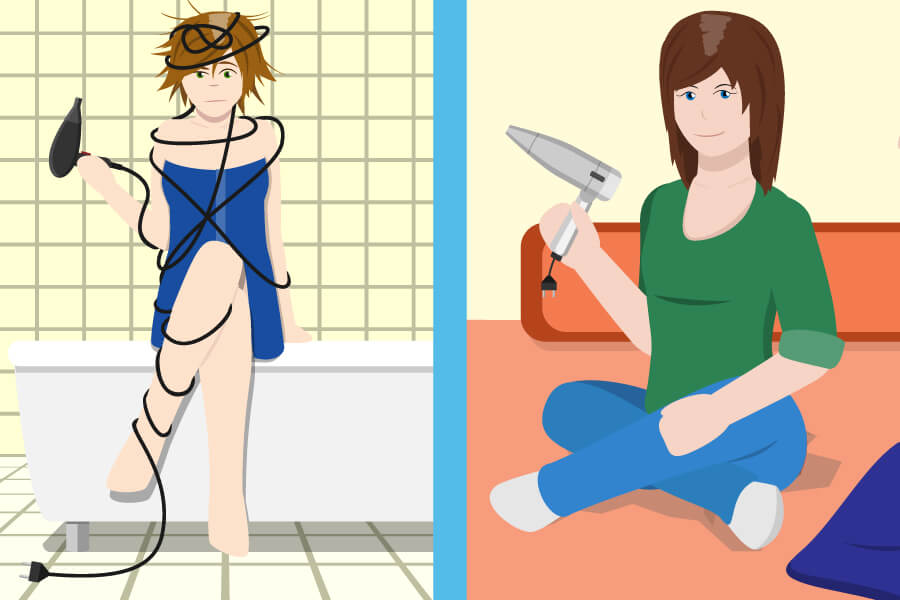
If the hairdryer does not have a retractable cable, it may be advisable to mount a holder on the wall and simply hang the hairdryer there after use. To reach the hair at the back of the head comfortably, some hair dryers also have a cable joint that can be swivelled by up to 360 degrees.
Lightweights are needed here
If styling is going to take longer, a lightweight hairdryer is recommended. Ordinary hand-held hairdryers weigh between 500 and 700 grams; only compact travel hairdryers are lighter. Models that weigh more than a kilogram will tire the hand during prolonged use. In addition, larger appliances are difficult to store in the bathroom. High-quality, robust models are usually made of hard plastic. For comfortable operation, the appliance should lie well in the hand. Ideally, it should have a soft-touch housing and an ergonomic, non-slip handle. In addition, the most important settings such as the blower levels should be easily adjustable with one hand.
Safety first: Overheating protection and automatic switch-off
An overheating protection prevents the heating strands inside the hair dryer from becoming too hot (over 70 degrees Celsius), for example, if the cooling air supply is too low due to a build-up of dust on the filter or an unintentional covering of the air inlet grille. This prevents the individual, sensitive hair strands from overheating, which would damage the hair structure. To protect not only the hair, but also your own four walls, the device should have an automatic switch-off function. If users switch on the appliance unintentionally or forget to switch it off, it switches off automatically after a while or when a certain temperature is exceeded.
Tested product safety: What does the CE and GS mark mean?
If the hairdryer bears a CE or GS mark, buyers can be sure that it complies with the health and safety regulations in force in Germany or Europe. The CE mark (“Conformité Européenne”) is even mandatory on all hairdryers according to European directives such as the Machinery Directive. However, manufacturers can check the product themselves, which means that the seal is not particularly meaningful. It therefore serves less to assure consumers than to assure the European Union that the product may be put into circulation in any member state.
The GS mark, on the other hand, can only be awarded by the 84 independent test centres operating worldwide, such as TÜV, which test not only the product but also its manufacture. The abbreviation stands for “Tested Safety” and is the basis of the German Equipment and Product Safety Act. However, the use of the GS seal is completely voluntary.
The guarantee: A guarantee of quality?
As a rule, manufacturers issue a guarantee voluntarily. Therefore, they can determine for themselves how long and under what conditions it is valid. It is not to be confused with the so-called legally binding warranty vis-à-vis the dealer. In the case of a guarantee, it is irrelevant whether the appliance is damaged from the moment of purchase. This is of particular benefit to buyers whose product is only damaged in use. In order to circumvent such claims, many manufacturers impose restrictions in their warranty statements. For example, they exclude improper use or the wear and tear of wearing parts from the warranty.
The warranty provided is often an indicator of the quality of a hair dryer. Therefore, consumers should pay close attention to the time, but also the conditions and the benefits granted afterwards. With low-priced appliances, long warranty periods are not to be expected. However, even well-known suppliers sometimes grant no more than two years on expensive products, others up to five years. Often, however, customers can extend the warranty to three years for an additional charge.
Sewing machine or jackhammer? The volume
The question of the operating volume of the hairdryer is of particular concern to frequent hairdryers. Because of its close proximity to the ears, the decibel level should be as low as possible to prevent hearing damage. Depending on the size, wattage and blower level used, hairdryers can reach up to 80 decibels. This value almost corresponds to the volume of a jackhammer. At best, the noise level remains below 60 decibels, which is roughly comparable to the noise level of a sewing machine.
For convenient cleaning: Removable ventilation filters
Hair dryers usually have a removable ventilation filter so that the user can clean them more easily. This makes it easy to remove the accumulated dust. If the dust is not removed regularly, it can negatively affect the volume of the appliance.
Diffuser attachment and ondulating nozzle: With these attachments every styling succeeds
Several hair dryers come with interchangeable attachments for styling. A diffuser attachment or an air shower, a wide, circular attachment with several small rod nozzles, distributes the air particularly evenly, for example, so that the hair is not permanently exposed to direct heat but rather “kneaded” dry. In this way, users not only protect their hair structure in the long run, but also add volume to their hair or style curls.
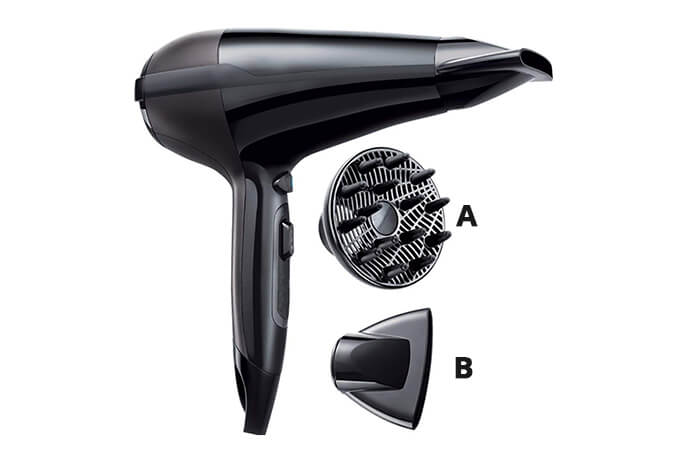
The beak-shaped ondulating nozzle, also known as the styling nozzle, narrows and focuses the air jet, which allows the hairdryer to be used specifically for drying or styling – be it for shaping curls, fixing the pony or smoothing the hair. Users can quickly attach or replace the required attachment. If these attachments are not included, they can usually be purchased later.
Short, curly, coloured – hairdryers for every need
Depending on the individual hair type, a different model or technology is suitable. In order not to damage the hair structure during drying, but to get the best result without using unnecessary power, the choice of the right model is crucial:
Short hair

For short hairstyles, hairdryers with a low power of up to 1,000 watts are quite sufficient, as the hair is usually dried quickly. This saves consumers electricity costs.
Long hair

For longer and thicker hair, hairdryers with a lot of power are suitable, ideally with a turbo function. They dry the hair at higher air speeds, so blow-drying takes less time.
Dry hair

A diffuser attachment protects dry hair from the intense heat thanks to even heat distribution and indirect blow-drying air. Since hardly any moisture is extracted, the hair is protected from heat damage.
Fine, coloured or damaged hair

Consumers with coloured, very fine or generally damaged hair are also well advised to use a diffuser or a heat protection function. The mild air flow and the gentle temperature level ensure that the hair is blow-dried particularly gently.
Waves or curls

A diffuser is also ideal for wavy or curly manes to create volume and shape the hair so that it looks more defined and well-groomed. Thanks to the even heat distribution, the hair is also styled gently.
Quickly greasy or flaky hair

For consumers who tend to have greasy or flaky hair quickly, using the gentle cold setting is a good idea. Since high temperatures stimulate sebum production, colder air is recommended.
Blow-drying hair gently and correctly – step by step to the hairstyle of your dreams
Many women dream of a long, shiny head of hair, but in reality they often struggle with dry, dull and split ends. Even “rubbing dry” or combing the hair puts enormous stress on the cell structure. So it is not surprising that strong heat exposure is also harmful to the delicate hair. But not everyone has the time to let their hair dry in the air. Moreover, air-dried hair usually lacks volume. So it’s all about the right care.
Thanks to the latest technologies, users now blow-dry their hair much more gently, but there are still a few points to consider in order to keep the hair as healthy, shiny and smooth as possible:
- Hair care already starts with washing: Since hair is very sensitive when wet, the water should not be too warm when washing. For an ideal result, the shampoo should be tailored to the hair type (e.g. specifically for oily, dry or flaky hair). A conditioner improves combability so that fewer hairs break off or even fall out. For deep conditioning, it is also advisable to apply a hair conditioner once a week to supply the hair with the most important nutrients.
- Never blow-dry your hair soaking wet: After washing, the hair should first be allowed to dry. Before reaching for the hairdryer, consumers should wrap their wet hair in a towel, for example. Heat causes the water to evaporate, which not only dries out the hair, but also makes it rough and brittle. However, the hair should not be rubbed or combed directly after washing (except with a coarse-toothed comb), but squeezed or carefully dabbed.
- Always use heat protection: When blow-drying, especially fine, delicate hair, it is also advisable to use a heat protectant in the form of a spray, gel or cream that is sprayed or massaged directly into the hair after washing to act like a protective coat around the hair and prevent excessive heat from penetrating the cell structure.
- The angle is crucial: Ideally, the hairdryer should be set at a 45-degree angle. This way, the hair dryer is pointed downwards so that users work from the tips, the oldest part of the hair, upwards. To avoid causing burns, the hairdryer should not be pointed at the scalp for too long.
- Do not blow dry too hot: The medium temperature setting is usually quite sufficient, even if it makes blow-drying take a little longer. Hot air draws moisture out of the hair, which makes it brittle. At the latest, if it gets too hot on your head, this is a sign that the temperature is too high. Above 70 degrees Celsius, damage to the hair structure can occur. The cold setting is the gentlest and is also used to fix the hairstyle.
- Do not blow-dry too hard: The right blower strength depends on your own preferences and the respective hair type. For fine or thinning hair, it should not be too strong, while longer or thicker hair can tolerate a little more blower.
- Keep a minimum distance: The distance between the hairdryer and the hair should be at least 20 centimetres and should not focus on one spot for too long. It is therefore advisable to keep the hairdryer moving at all times.


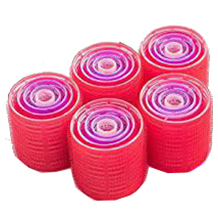
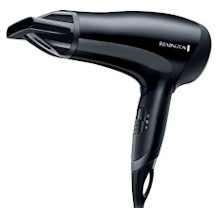
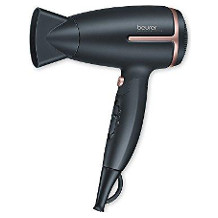
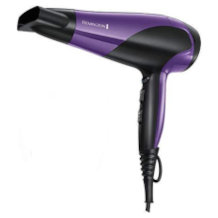
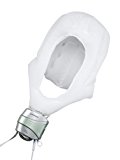
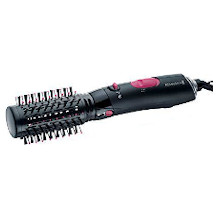
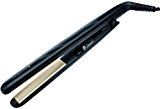

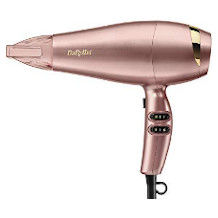
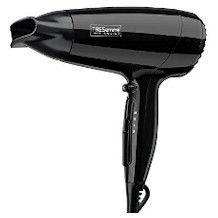
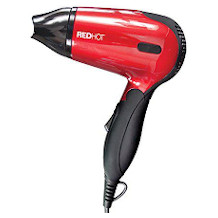
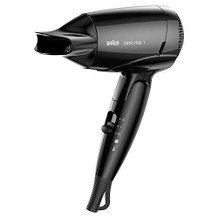

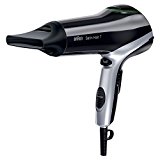
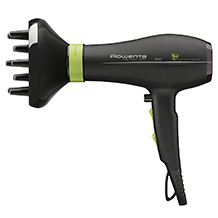
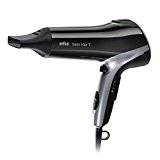
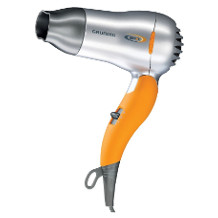
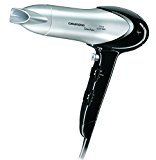
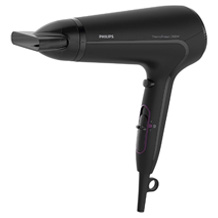
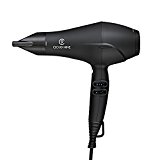

 24,320 reviews
24,320 reviews
